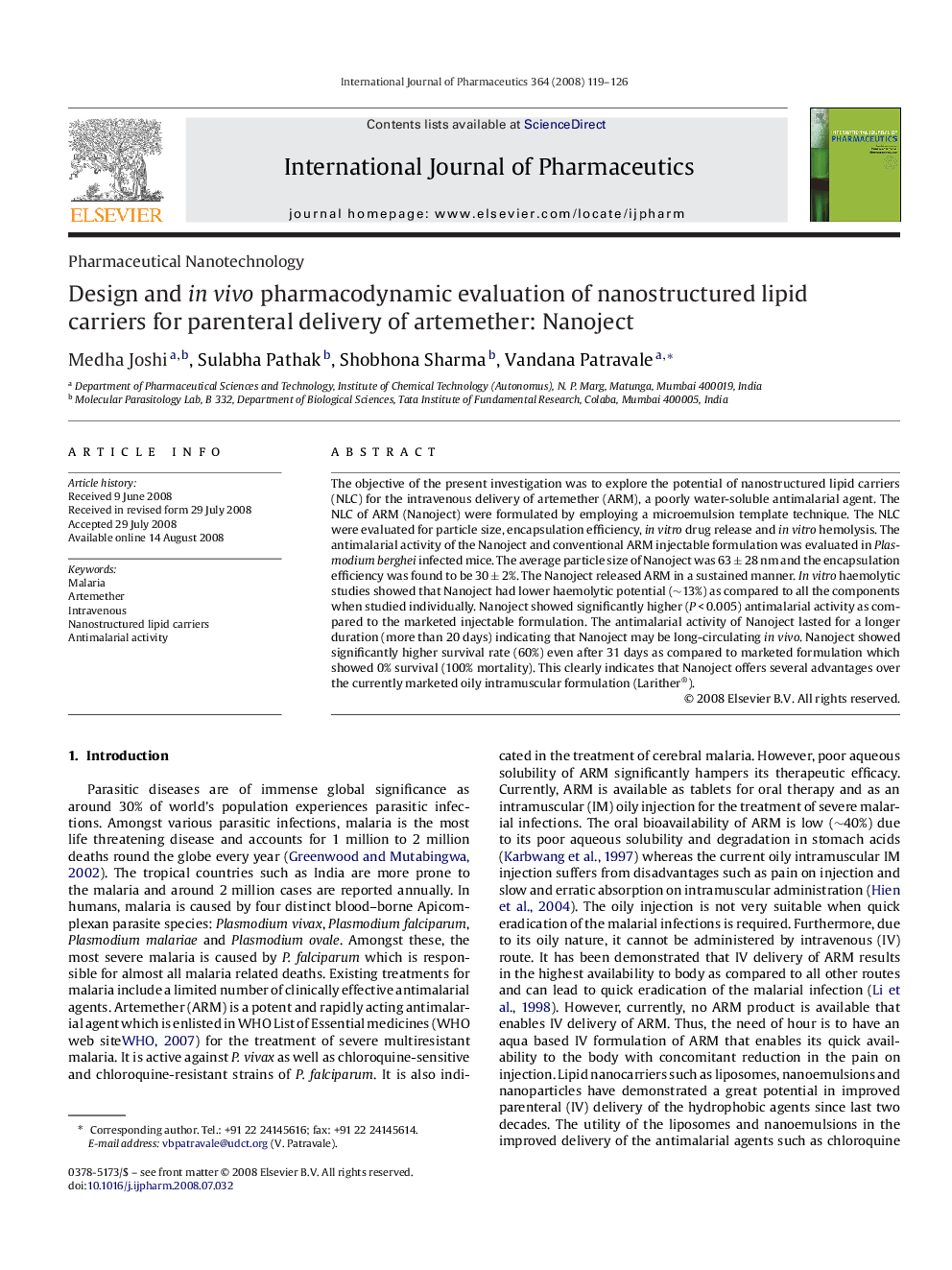| Article ID | Journal | Published Year | Pages | File Type |
|---|---|---|---|---|
| 2505047 | International Journal of Pharmaceutics | 2008 | 8 Pages |
The objective of the present investigation was to explore the potential of nanostructured lipid carriers (NLC) for the intravenous delivery of artemether (ARM), a poorly water-soluble antimalarial agent. The NLC of ARM (Nanoject) were formulated by employing a microemulsion template technique. The NLC were evaluated for particle size, encapsulation efficiency, in vitro drug release and in vitro hemolysis. The antimalarial activity of the Nanoject and conventional ARM injectable formulation was evaluated in Plasmodium berghei infected mice. The average particle size of Nanoject was 63 ± 28 nm and the encapsulation efficiency was found to be 30 ± 2%. The Nanoject released ARM in a sustained manner. In vitro haemolytic studies showed that Nanoject had lower haemolytic potential (∼13%) as compared to all the components when studied individually. Nanoject showed significantly higher (P < 0.005) antimalarial activity as compared to the marketed injectable formulation. The antimalarial activity of Nanoject lasted for a longer duration (more than 20 days) indicating that Nanoject may be long-circulating in vivo. Nanoject showed significantly higher survival rate (60%) even after 31 days as compared to marketed formulation which showed 0% survival (100% mortality). This clearly indicates that Nanoject offers several advantages over the currently marketed oily intramuscular formulation (Larither®).
